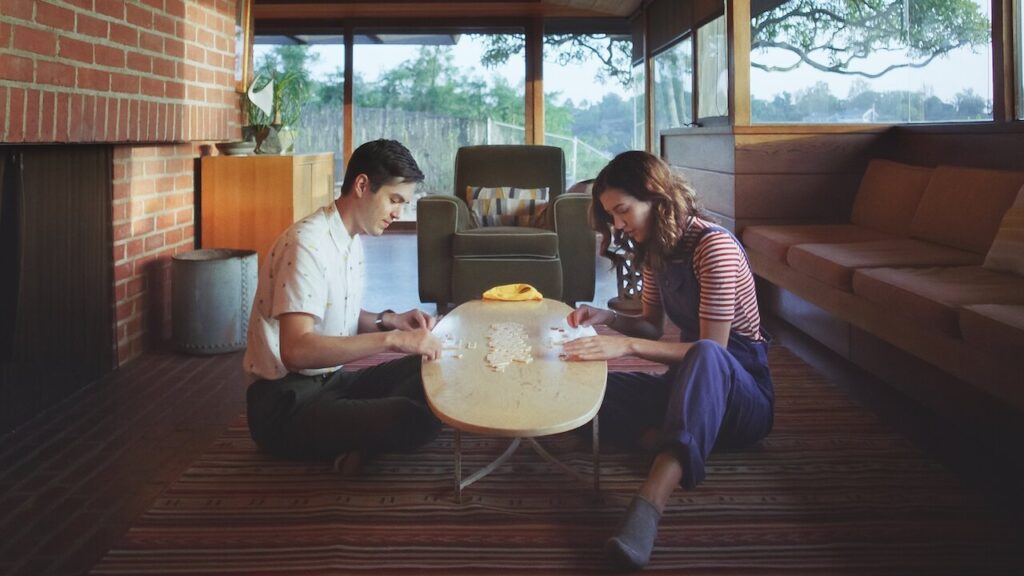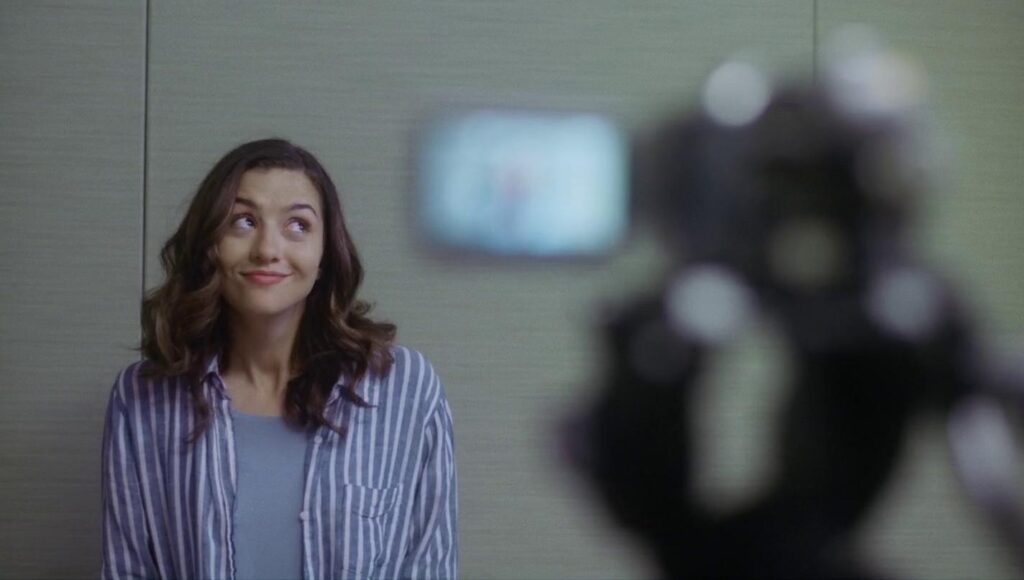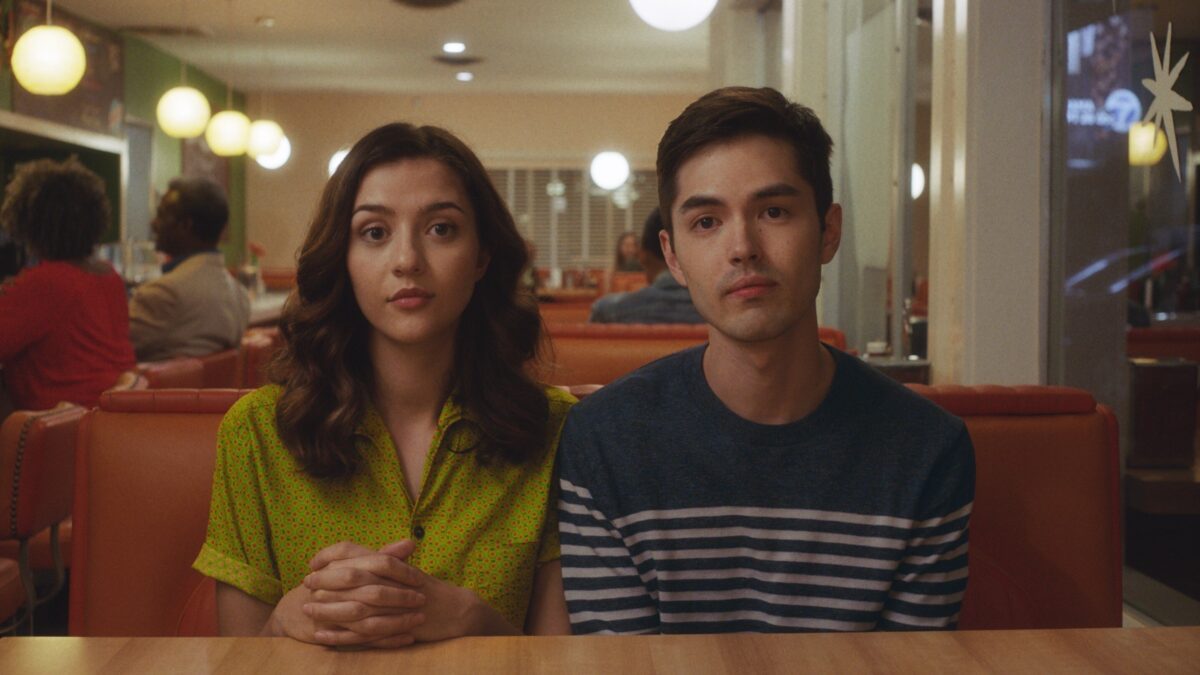Do you really wanna love me forever? (Oh-oh-oh)
Rejoice: an exciting new cinematic voice. In just two features, James Sweeney has already carved out a very specific lane for himself: hyper-verbal, neurotic, queer character studies of entrapment and self-delusion where the jokes and swerves come so fast you sometimes wonder if you accidentally hit 2x playback speed. Straight Up, his debut, vividly lays out the tone and texture of a Sweeney picture. It’s a romantic comedy that’s quipping nonstop, but also investigating complexities of queerness, loneliness, and what counts as “real” love in the first place.
Todd (James Sweeney) is a tightly wound Los Angeles twenty-something with OCD, which includes a revulsion of bodily fluids. He has a long history of identifying as gay despite his aversions preventing him from having any sort of regular sex. After a string of failed dates and therapy sessions, he convinces himself that maybe he’s not gay after all; maybe he’s long miscategorized himself, and his sexual failures and doubts are a cue for him to try a straight relationship. Enter Rory (Katie Findlay), a struggling actress he meets in the self-help aisle of the library. She’s emotionally guarded, deeply lonely, and nearly as disconnected from intimacy as he is. They click instantly, crash into each other’s lives as fellow wayward souls, and decide to try on the label of boyfriend and girlfriend, even as both quietly know this might just be a dodge around their deeper issues.
Sweeney writes their connection in rapid-fire dialogue: lightning-fast, hyper-specific, and razor-sharp in a way that feels halfway between old-school screwball and the kind of banter you’d actually have with your funniest friends. The rhythm is remarkably pleasing; scenes have a verbal choreography to them such that the action and blocking on screen is in perfect sync with the dialogue. When Todd and Rory lock into a bit, topics ricocheting from Gilmore Girls to career panic to the existential horror of decorative pillows, it not only offers multiple punchlines that whiz by almost too fast, but provides some lens into their broken worldviews. It helps enormously that their chemistry is so natural; the pair really seem like lifelong friends who could talk for hours.

Sweeney’s direction is nearly as tightly controlled as his writing. Shot in the Academy 4:3 aspect ratio, the film boxes Todd and Rory into precise, symmetrical frames that echo their own sense of entrapment: in their sexuality, their adulthood, and in societal expectations for what a “proper” relationship should look like. Sweeney’s staging and blocking have a sensibility and precision reminiscent of obvious inspiration Wes Anderson, but Sweeney keeps the look just a smidge looser than Anderson; the spaces are bright and airy rather than Anderson’s painterly tastes. Sweeney uses a very cool split screen effect for a scene, showing parallel conflicts of Todd and Rory, a technique he’d deploy even more powerfully in Twinless.
As a performer, Sweeney walks a tightrope. Todd is often neurotic to the point of unlikable, but Sweeney’s detached, self-deprecating delivery keeps him just this side of sympathetic; even when Todd is being insufferable, he’s at least self-effacing about it. You can still “feel” Sweeney’s acting in some of his darker, more emotional moments; his dramatic chops aren’t quite at the same level as his joke delivery. But as a comic engine, he’s terrific, tossing off quips with real gusto.
The real revelation, though, is Findlay. Rory could easily read as a disorganized stack of tics: the lonely actress, the intimacy issues, the razor wit as defense mechanism. But Findlay threads something much more layered. She matches Sweeney beat for beat in timing and wordplay while sneaking in a deep, bruised tenderness that reshapes entire scenes and made me fall for her. She has a bit of femme fatale allure in how she puts on a sweet yet dangerous face, and she never sands off the character’s edges. It’s a complicated, empathetic portrait that makes you want to see Findlay in about ten more movies immediately.

Straight Up isn’t flawless, and most of the cracks build up in the back third. Once Todd and Rory get forced apart so the film can test their bond in the way rom-coms always do in the home stretch, the narrative loses a little of its earlier snap. The central conflict gets mushier just when it should sharpen. Another issue is that the script never quite nails what, exactly, is going on with Rory. At times her interior life reads as depression, at others as sexual trauma, and at others as something closer to an asexual or intimacy-phobic orientation. The movie doesn’t always find a clean throughline between those shades despite Findlay’s strong work. (I would not be astonished if some material exploring Rory’s past was left on the cutting room floor or scrapped in a late script revision.) Her ambiguity is thematically interesting — this is a movie about refusing tidy labels, after all — but it also feels like the film itself hasn’t fully decided what’s broken and what’s simply different.
Still, as a quasi-romcom, Straight Up is remarkably distinct and satisfying. It’s sensationally funny, packed with well-delivered dialogue and fun little sketches, and genuinely curious about forms of queerness and connection that don’t map neatly onto the usual romcom arcs. More than anything, it announces Sweeney as a cinematic voice worth tracking, both as a writer and a director, and it sketches out some of his preoccupations that he deepens and expands in Twinless, one of the standout films of 2025: guarded queerness, talky misfits, self-delusion, formally tight visual worlds. Even with its imperfections, Straight Up feels like the start of something: a filmmaker figuring out his voice on the fly and taking us along for the ride.
Is It Good?
Very Good (6/8)
Dan is the founder and head critic of The Goods. Follow Dan on Letterboxd. Join the Discord for updates and discussion.

